Lusk’s Koura VI
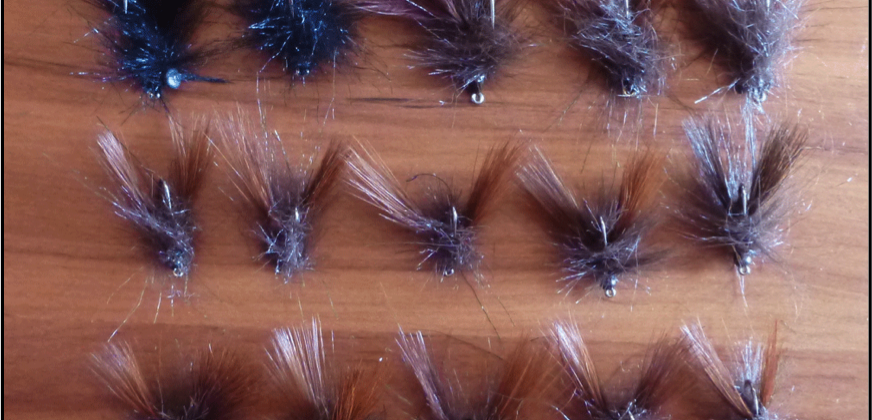
Koura Fly Prototype Three, Four & Five
This series of articles is available as an ebook on Amazon.
Having thought more about the unnecessarily complex fly I had tied I decided to go for something much simpler. Essentially the revised pattern was a Leech with a split tail and a tungsten bead to give the fly the right action when it moved.
I did not have any brown leech yarn, so I experimented with a couple of other body materials while I waited for the brown leech yarn to arrive.
Koura Pattern #3
Hook: Kamasan B200 #10
Claws: Two clumps of Brown Marabou, curves facing out
Body: Brown Rabbit Strip
Weight: 3.5mm Black Tungsten Bead
While this fly looked good it also looked like it would absorb too much water and be hard to cast.
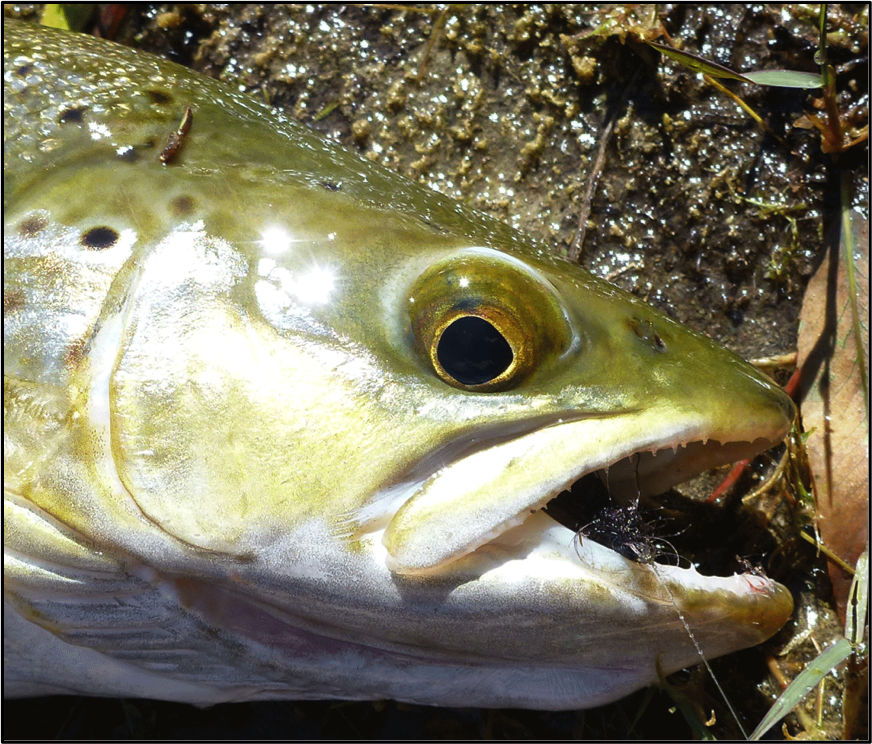
A Lake Tutira Brown that absolutely hammered a Koura Pattern tied with mohair leech yarn.
Koura Pattern #4
This pattern is essentially a woolly bugger with a split marabou tail. I have never liked woolly buggers as they look too uniform and are more complex to tie than a leech.
Hook: Kamasan B200 #10
Claws: Two clumps of Brown Marabou, splayed
Body: Brown Chenille
Hackle: Brown Palmered Hackle
Weight: 3.5mm Black Tungsten Bead
The chenille bodied fly did not look right as it did not have enough bulk, and Koura are relatively bulky bodied. It is also too uniform for my liking.
Koura Pattern #5
Hook: Kamasan B200 #6
Claws: Two clumps of Brown Marabou, splayed
Body: Brown Mohair Yarn
Weight: 3.5mm Black Tungsten Bead
I tested all these three flies and was somewhat surprised to discover that all of them ended up being too heavy to fish effectively. The thick body materials absorbed water, and the fly became unwieldy to cast. It also made a substantial splash when it hit the water.
When the fly was presented far enough ahead of a fish so the fish did not see the splash or the fly sinking it was effective. The problem was getting the presentation right, with browns in particular refusing if they see the fly hit the water or sinking. Rainbows are less concerned about coming up in the water to take a fly, but browns are hard to get to take if the fly is not at their level in the water column when they see it.
Further Thought
Poor design work, backed up by trial and error, had created flies that looked ok and swam ok but were not practical to use. This meant I had to scale down my original pattern to something smaller.
A smaller scale fly tied on a smaller hook and without such a water absorbent body was the next fly attempted. Wary of having created flies that were too heavy I tied up two flies, one with a 3mm tungsten bead, and the other with a 3.5mm tungsten bead.
Koura Pattern #6
Hook: Kamasan B200 #10
Claws: Two Brown Marabou feathers, splayed
Body: Brown Mohair Yarn
Weight: 3.5mm Black Tungsten Bead
Having thought about the flies that I used river fishing, the 3.5mm bead was probably not what was causing the fly to be too heavy to cast. I use the 3.5mm bead on all my bombs, and even when I have added wraps of lead to the fly it is still easy to cast.
After my previous experiences with getting the weight wrong I was a little sceptical about the effective weight of this fly so I also tied some with a much smaller and lighter 3mm tungsten bead.
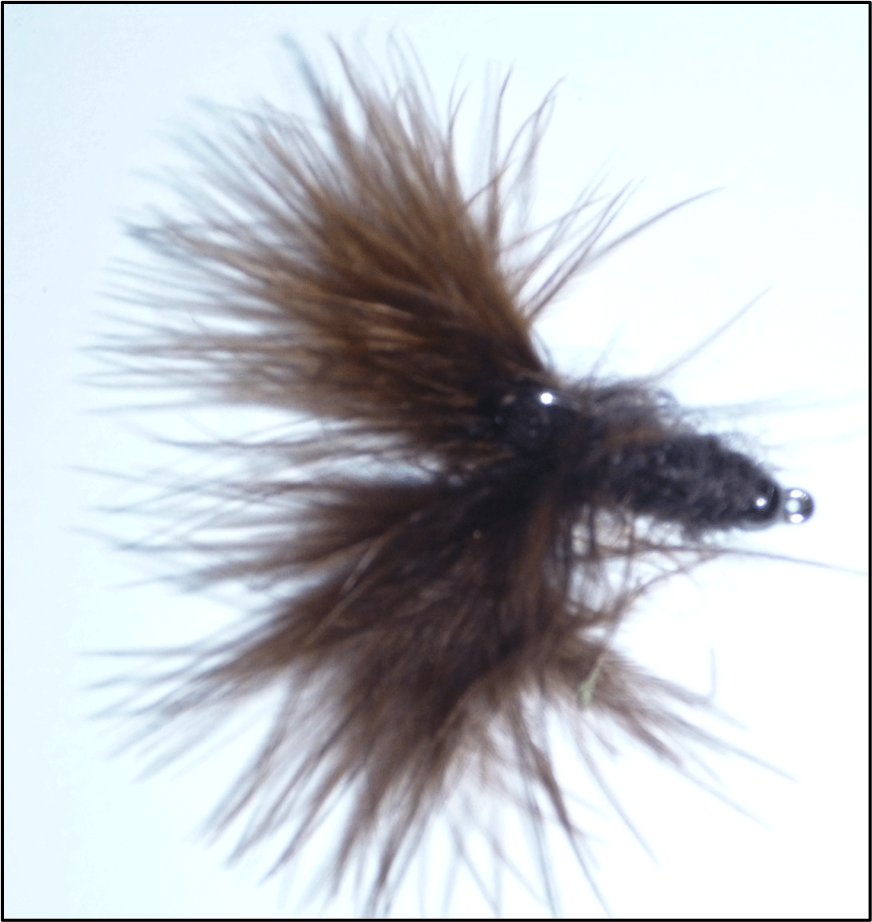
Mohair Leech Yarn Koura. The fly is as horrible as the photo.
Koura Pattern #7
Hook: Kamasan B200 #10
Claws: Two Brown Marabou, splayed
Body: Brown Mohair Yarn
Weight: 3mm Black Tungsten Bead
Tying Instructions
- Smash the barb and put the tungsten bead on the hook before inserting in the vice.
- Tie in a small piece of mohair yarn at the back of the hook.
- Wrap yarn to build up a small bulge at the back of the hook to splay the marabou.
- Tie in the Marabou on both sides of the hook.
- Wrap the mohair yarn around the marabou and wrap down the hook.
- To build up the body wrap the yarn back and forwards so there are three layers of yarn on the fly.
- Tease out the outside yarn to give a furry appearance.
- Apply a flexible glue like Dave’s Fleximent to the tie off points. Do not use hard setting glue like Zap a Gap as it will affect the flies motion.
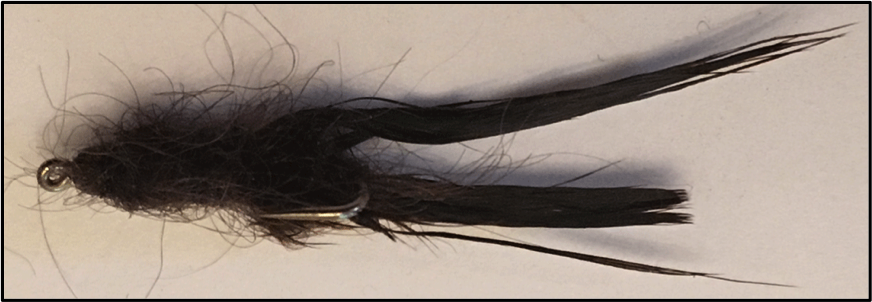
Mohair Leech Yarn Koura
I. Lusk’s Koura | II. Further Design Work | III. Trout & Flies for Similar Conditions | IV. Design Features for the Next Prototype | V. Rethinking the Koura Pattern | VI. Prototype 3, 4 & 5 | VII. A Fish Catching Fly | VIII. Further Design Work II | IX. Lusk’s Koura Tying Instructions | X. Fishing Lusk’s Koura | XI. The Best Pattern | XII. A Revised Pattern | XIII. A Jig Hook Koura
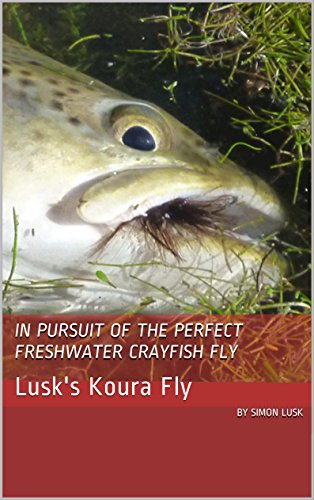
This series of articles is available as an ebook on Amazon.
